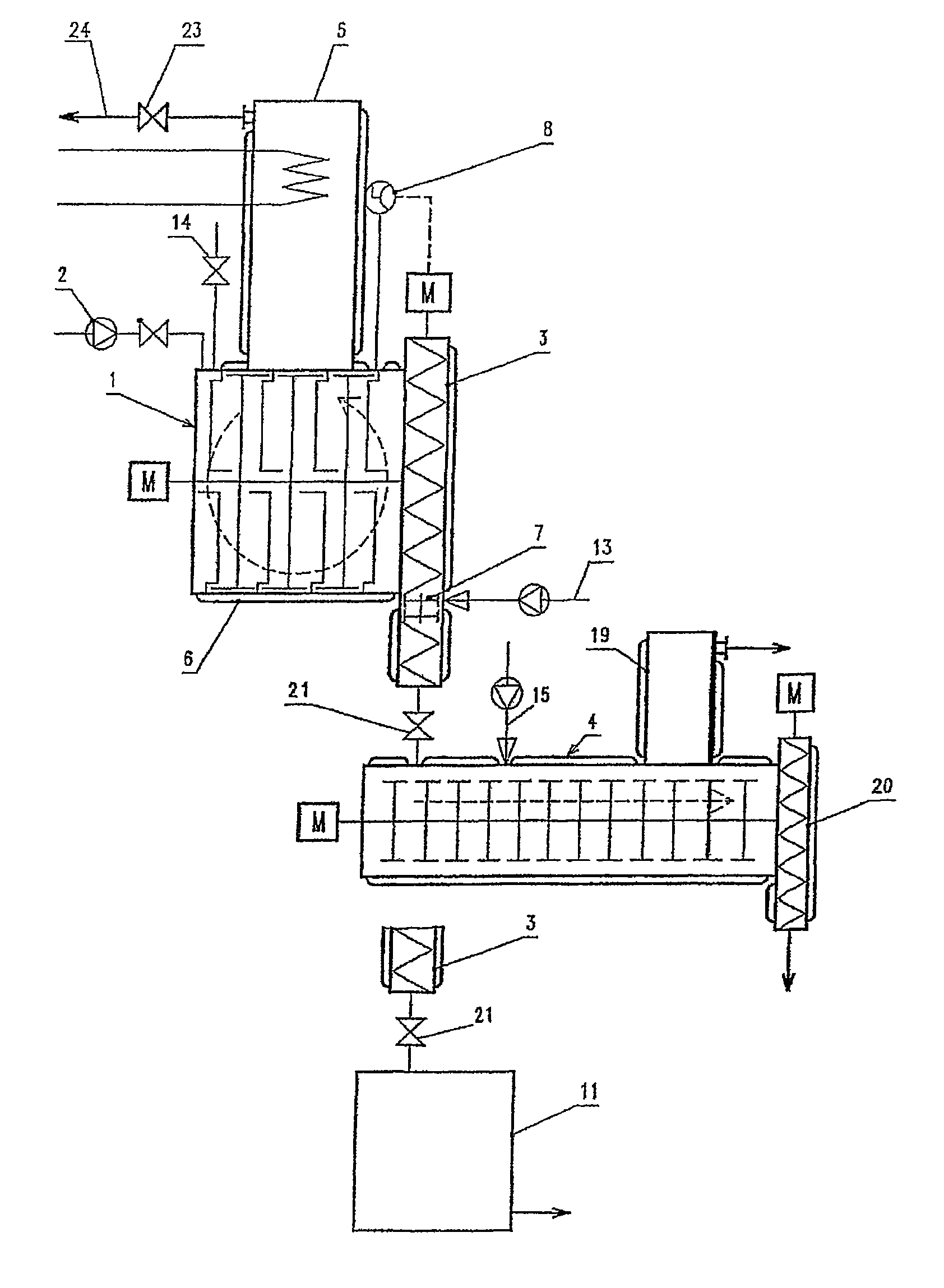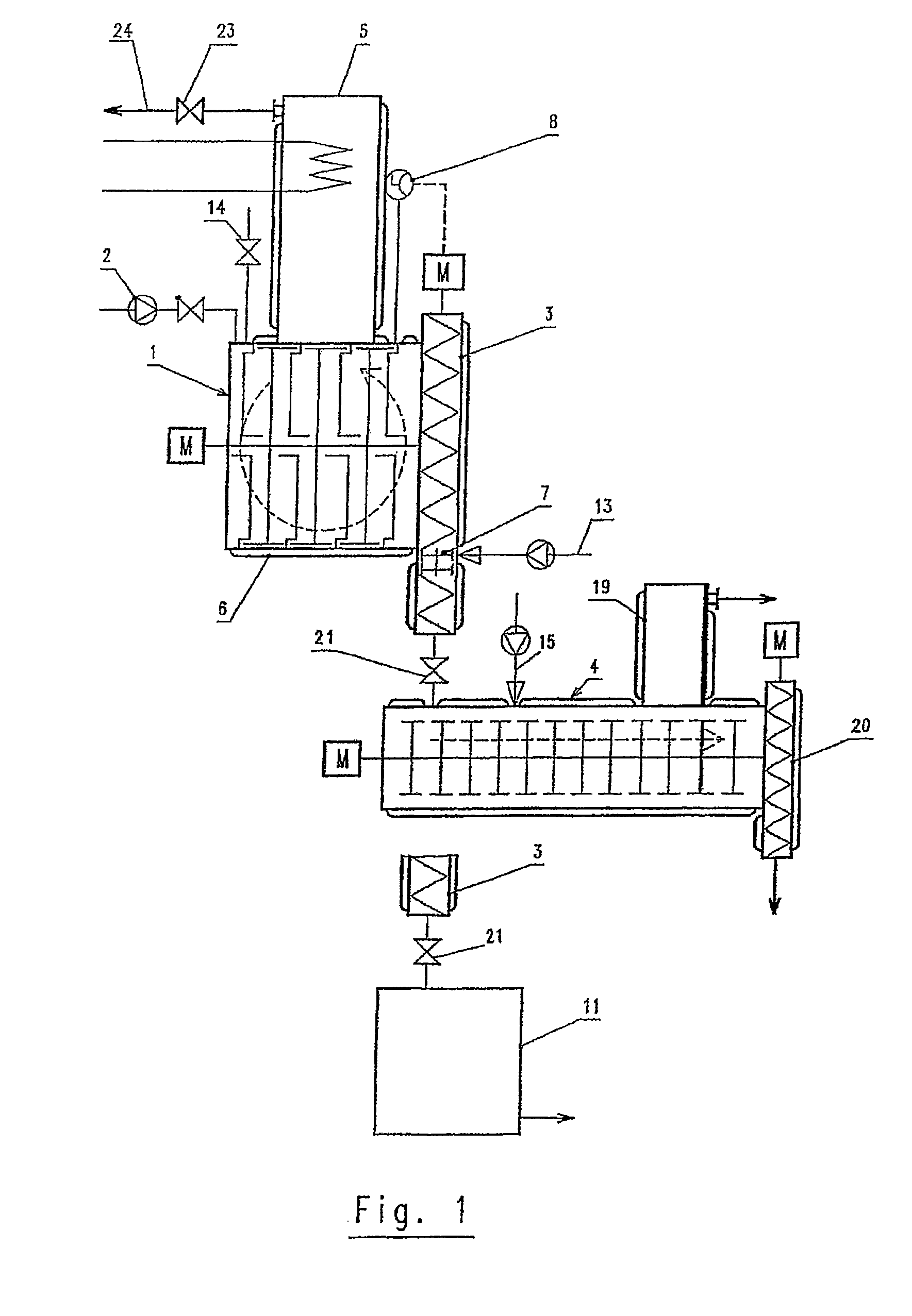Method for the continuous implementation of polymerisation processes
a technology of polymerization and process, applied in the direction of clay mixing apparatus, transportation and packaging, prosthesis, etc., can solve the problems of lump formation, inability to process products, and finally inability of the stirrer to achieve sufficient convective flow
- Summary
- Abstract
- Description
- Claims
- Application Information
AI Technical Summary
Benefits of technology
Problems solved by technology
Method used
Image
Examples
example 1
[0047]Continuous bulk polymerization of MMA above the glass transition temperature (novel process).
[0048]The backmixed LIST kneading reactor 1-1.2 has a total volume of 6 liters, and the casing is heated with an inlet temperature of 145° C. A cooled dome, wall temperature 15° C., which condenses the monomer vapors back into the process space, is disposed on the kneading reactor. A discharge twin screw (3-3.2) is mounted on the end side of the reactor (1-1.2) and discharges the polymer mixture with the same throughput as the monomer stream metered in. The jacket of the discharge twin screw (3-3.2) is heated to 210° C. A heated valve is installed downstream of the discharge twin screw, in order to ensure that the system is leakproof for the startup. The monomer feed tank and the kneading reactor are inertized with nitrogen (N2) before startup. The internal pressure in the reactor is adjusted to 3.5 bar absolute with inert gas (N2). The monomer metering is envisaged with a monomer tank...
example 2
[0056]EP 0 209 253 A1 (manufacture of butyl rubber) discloses a continuous polymerization process of butyl rubber in an extruder. Here, the monomers are polymerized in a halogenated polymerization medium at constant pressure under boiling conditions with plug flow, using a modified aluminum catalyst. This converts the nonviscous monomer to a viscous tacky polymer with advancing reaction.
[0057]It has been found that, owing to the huge viscosity difference between monomer and polymer, the desired plug flow in the extruder cannot be maintained because the large content of nonvolatile monomer undermines the plug flow and prevents the product transport based on the shear gradient in the reactor. This leads to the fact that it is virtually impossible to obtain uniform product transport and hence homogeneous conversion rates.
[0058]In the case of use of a backmixed mixing kneader 1-1.3 according to the present invention, this problem can be avoided elegantly, since the comparatively small a...
PUM
| Property | Measurement | Unit |
|---|---|---|
| volume | aaaaa | aaaaa |
| temperature | aaaaa | aaaaa |
| temperature | aaaaa | aaaaa |
Abstract
Description
Claims
Application Information
 Login to View More
Login to View More - R&D
- Intellectual Property
- Life Sciences
- Materials
- Tech Scout
- Unparalleled Data Quality
- Higher Quality Content
- 60% Fewer Hallucinations
Browse by: Latest US Patents, China's latest patents, Technical Efficacy Thesaurus, Application Domain, Technology Topic, Popular Technical Reports.
© 2025 PatSnap. All rights reserved.Legal|Privacy policy|Modern Slavery Act Transparency Statement|Sitemap|About US| Contact US: help@patsnap.com



